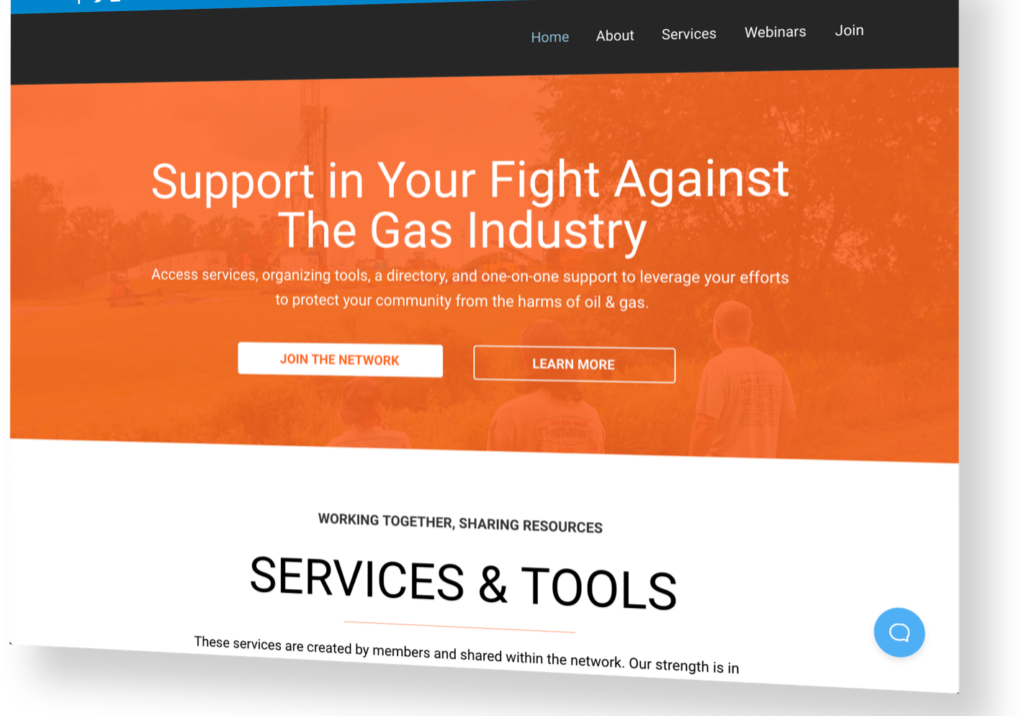
Halt the Harm Network
The Halt the Harm Network is a people-powered network connecting leaders and supporters in the movement to halt the harms of fracking in order to solve problems, collaborate, share ideas and inspire each other to halt fracking’s impact on our families, communities, and environment.
Since the start of the boom in unconventional drilling in America, a movement has been growing to halt the harms caused fracking. But the movement to halt these harms is fractured, making it hard to build momentum or scale initiatives. There are differences in positions and approaches between groups and individuals engaged in the fight and in circumstances between states―some of which have already been extensively fracked and face much more, and others that are debating moratoriums or bans. These differences contribute to the division of people into separate camps, preventing the movement from reaching the level of collaboration necessary to have any hope of countering the relentless, well-funded and coordinated opposition of the drilling industry.
The Halt the Harm Network (HHN) was launched in 2014 to help connect leaders to each other in order to scale what works, share effective lessons and services, and open opportunities for collaboration to prevent the harmful impacts of fracking. After a year of development to build the Network, expand support services and grow the base, HHN is now focused on supporting Leaders through the development and deployment of pilot support services and engaging people on a broad level so they can get involved in the efforts, events, petitions and campaigns of the many HHN Leaders.
In May 2015, advocates in Pennsylvania were working to generate public comments to the state’s Department of Environmental Protection in support of stronger regulations around oil and gas development, including the curtailing of open air wastewater pits from which toxic waste from fracking could evaporate into the air or leach into the soil. The Network highlighted the efforts of HHN Leader Adam Garber, field director at PennEnvironment, who was encouraging people to submit comments to the department. This outreach helped Adam generate more than 2,000 additional comments, and introduced people to his campaign that he would not otherwise have been able to reach. Those people are now also following Adam and his organization’s work through additional communications from PennEnvironment, and are ready to continue to help other HHN Leaders.
Frequent webinars have been held on a diverse array of topics related to fracking such as health impacts and providing direct support to the harmed, reaching hundreds of people across the country. These webinars serve both to provide a platform for Leaders to share their important work and also to increase awareness of the harms of fracking. Each webinar raises the visibility of the Network, attracting new supporters and Leaders to participate.
The tagline of HHN is “People Powered Against the Harms of Fracking.” Those people, many who are already heavily engaged in this work, and many, many more who remain unaware or ill-informed about the harms caused by fracking, need the support and connections this network can provide them.
“We are grateful for the Halt the Harmed Network and the collaboration with leaders from different areas. Working together to help those who have been abandoned by the industry that harmed them, and our government has given these people hope. We are happy and grateful to be a part of this collaboration.” — Briget Shields, outreach director at Friends of the Harmed/Shalefield Stories
“With help from the Halt the Harm Network, our campaign to collect public comments on the Pennsylvania DEP’s proposed oil and gas rules was a huge success. By creating a petition page and a series of customized emails, the Network made it very easy for me to expand PennEnvironment’s reach. With the Network’s help we collected over 4,000 comments, contributing to the collective voice of Pennsylvanians concerned about fracking’s harms.” — Adam Garber, field director at PennEnvironment
